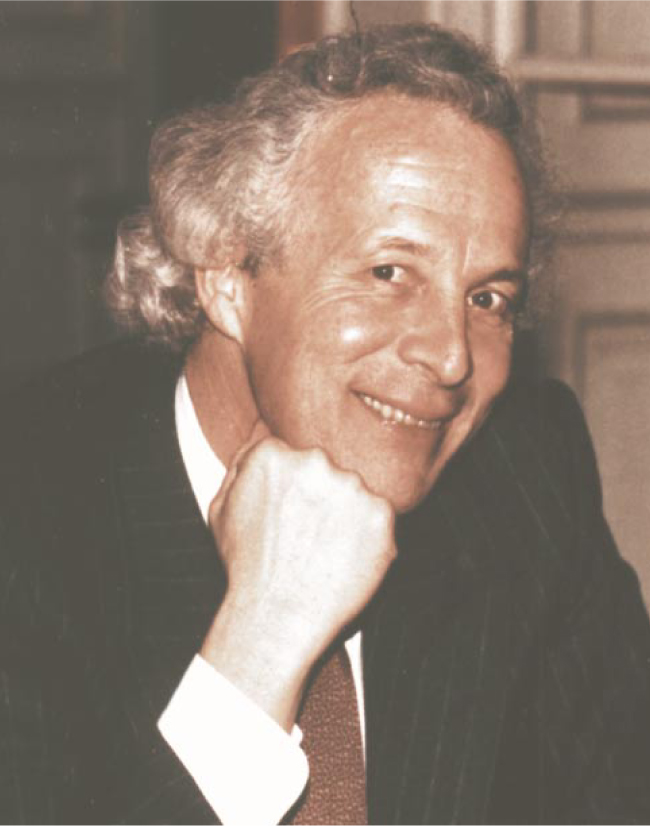Thomas John Ypsilantis
DOI: 10.1063/1.1381114
Thomas John Ypsilantis, codiscoverer of the antiproton and codeveloper of the Čerenkov ring-imaging particle-identification technique, RICH, died on 16 August 2000 in Geneva, Switzerland, of a heart attack.
Tom was born in Salt Lake City, Utah, on 24 June 1928. He was the second of three children of Eugenia and John Ypsilantis, who had immigrated to the US from Greece in 1924. His father died when Tom was only 2
In 1950, Tom graduated from the University of Utah with a BS in chemistry. As a graduate student at the University of California, Berkeley, he soon apprenticed himself to Emilio Segrè. In his book Mind Always in Motion: The Autobiography of Emilio Segrè (University of California Press, 1993), Segrè comments, “Among the students was Tom Ypsilantis, who had studied chemistry but had recently come to me because he wanted to change to physics. I soon recognized his human qualities as well as his uncommon scientific ability. During my absence Tom and Clyde [Wiegand] succeeded in polarizing the proton beam of the synchrocyclotron by collision. The success obtained and Ypsilantis’s spirit of initiative impressed me, and I proposed a faculty appointment for him. He was one of the most promising physicists at Berkeley.” The polarization program that Tom pioneered at Berkeley led to a series of double and triple scattering experiments that yielded the data used by Nicholas Metropolis, Henry Stapp, and Ypsilantis in the first comprehensive phase shift analysis of nucleon-nucleon scattering at 310 MeV using the MANIAC computer at Los Alamos National Laboratory.
Shortly before receiving his PhD in physics in 1955, Tom joined with Owen Chamberlain, Segrè, and Wiegand to search for the antiproton. They designed an experiment based on measuring the masses of momentum-selected particles in a secondary beam using time-of-flight and Čerenkov counter techniques. Wiegand and Ypsilantis were key participants in this experiment, but, unfortunately, they were not chosen to share the 1959 Nobel Prize in Physics, which was awarded to Chamberlain and Segrè for this discovery.
In the mid-1960s, Tom married Beverly Allen, and seemed well on the way to a conventional future as a Berkeley physics professor. But as his friends and colleagues well know, Tom was never conventional, so perhaps it should not have come as a surprise when he decided to resign his tenured position and move first to Brookhaven National Laboratory and then to Europe. For the next 32 years, he worked mostly at CERN in Geneva, but also in France, Italy, and Greece.
A dominant theme in Tom’s research activities was to advance the frontiers of detector technology in order to explore fundamental issues in particle physics. In the 1970s and 1980s, a key challenge was to make reliable particle identification in large-volume detectors over as much of the available phase space as possible. To this end, he and one of us (Seguinot) developed the RICH technique. In a series of innovative experiments, they succeeded in finding gases with low ionization thresholds, designing clever optical configurations, and continually refining the method until high-quality ring images were produced. Over the years, they continued to improve the RICH technique so that it has now been adopted as an essential feature of major experiments such as Delphi and Omega at CERN; E605 and BTeV at the Fermi National Accelerator Laboratory; and SLD at SLAC.
Tom’s dedication to physics is well demonstrated by the fact that, after his contract at CERN had expired, he continued to do physics there even though he was no longer receiving any salary. Fortunately, the French National Center for Scientific Research (CNRS) and the Lepton Asymmetry Analyzer (LAA) Project at CERN, together with the National Institute of Nuclear Physics (INFN) in Rome, supported him and his activities for more than a decade. Tom assumed major responsibilities for the R&D work of the LAA group led by Antonino Zichichi. Tom enjoyed the stimulating intellectual atmosphere of this group, and the fruitful collaboration that ensued contributed greatly to the success of his new ideas and imaginative projects. This collaboration continued after his retirement, and he continued to work at CERN with undiminished vigor as a University of Bologna and INFN research professor.
For Tom, detector development was the means to the end of doing interesting physics. Together with Seguinot, Zichichi, and their colleagues, he embarked on a number of ambitious experimental proposals to study neutrino interactions. One of these, called HELLAZ, was a time-projection chamber containing 20 tons of helium gas at a pressure of 20 bars (2 MPa), operated at liquid nitrogen temperatures and shielded by blocks of solid carbon dioxide to detect solar neutrinos. Another was a 27-kiloton liquid water target and radiator with a RICH photon counter to search for oscillations in the CERN-Gran Sasso neutrino beam. More recently, in 1996, he proposed AQUA-RICH, a 125-meter diameter spherical detector containing 1 megaton of water for the observation of atmospheric neutrinos. He was passionate about these projects. He knew only too well that these grandiose ideas were technically difficult, but believed they were indispensable for progress.
From 1995 until his death, Tom served as an editor of the journal Nuclear Instruments and Methods. He was a quiet, unassuming person who did not seek personal glory. Nevertheless, his scientific accomplishments were recognized by a number of honors: Doctor Honoris Causa from the University of Uppsala in Sweden, member of the Scientific Academy of Greece, and in 1999, together with Seguinot, the French Physical Society’s Special Prize for the development of RICH.
As a scientist, Tom was creative, tenacious, and an eternal optimist. On a personal level, he was a man of character—sincere, open, warm, and charming. He leaves a large void in the physics community, not only because of his extraordinary scientific contributions, but because of his personal qualities as a friend and colleague.


More about the Authors
Jacques Seguinot. 1 CERN, Geneva, Switzerland .
Herbert Steiner. 2 University of California, Berkeley, US .
Antonino Zichichi. 3 University of Bologna, Italy .
